Is it really camping without a tent? Yeah, there are those rare, glorious nights when the wind and weather permit us to sleep beneath the stars—but you’d be dumb to not have a shelter handy just in case. And the booming popularity of techy truck campers and tow-behind sleepers is great for those who can afford it, but those mobile apartments sure do remove a lot of ruggedness from the situation.
The MeatEater crew is very particular about our nylon and canvas sanctuaries. Many of us own a half dozen or more tents for various applications, from summer car camping by the lake to late fall spike-outs high in the snowy mountains. For now though, we’re going to focus on general purpose tents, and will publish another piece on backpacking tents next month.
Jump to: Camping Tents We Use
What We Look for in Good Camping Tents
No tent on the market works for everybody in every situation. A turkey and whitetail hunter in the Southeast will have much different needs than someone who hunts the same species in the Northeast. Elk hunting in the Southwest presents drastically different conditions than the Northwest. The same things could be said for fishing purposes. Here are the factors we consider when selecting a new tent.
- Versatility
- Durability
- Ease of Assembly
- Size and Weight
When selecting a shelter, you should first visualize exactly where and when you plan to sleep in it. While many of these options are as good for July as they are for January, it helps to consider the worst conditions you might have to ask the product to handle. Some tents can handle 8 unexpected inches of snow overnight; others can’t.
Jump to: What Makes A Good Camping Tent
Camping Tents We Use
 Seek Outside 6-Person Tipi Tent
Steve's Pick
|
 REI Half Dome 2 Plus Tent
Mark's Pick
|
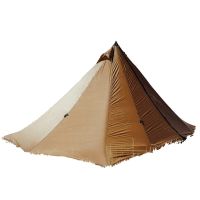 Seek Outside Redcliff Tent
Janis' Pick
|
 Alps Tasmanian 3-Person Tent
Spencer's Pick
|
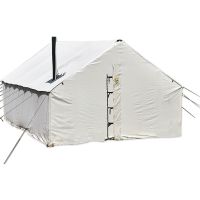 Montana Canvas 12x14 Traditional Wall Tent
Sam's Pick
|
|
|---|---|---|---|---|---|
| Highlight | Rugged and Heated | Bomber on a Budget | The Floorless Wonder | Vestibule Mule | Late-Season Luxury |
| Weight | 6 lbs. 8 oz. | 5 lbs. 5 oz. | 5 lbs. 5 oz. | 9 lbs. 4 oz. | 141 lbs. |
| Height | 7' 10" | 3' 8" | 6' 10" | 4' 6" | 8' 11" |
| Area | 59 sq. ft. | 35 sq. ft. | 41 sq. ft. | 43.5 sq. ft. | 168 sq. ft. |
| Floor | No | Yes | No | Yes | No |
| Poles | 1 | 2 | 1 | 2 | 21 |
| Price | $849 | $229 | $819 | $350 | $2,240 |
| Field Notes | Field Notes | Field Notes | Field Notes | Field Notes |
What Makes a Good Camping Tent
These are the primary criteria we’ve identified for selecting a camping tent.
1. Versatility
While it would be great to have a different tent for every month of the year and each type of adventure, most hunters and anglers need to get by with one or two rigs. Luckily, with today’s modern designs you can often use the same basic setup for a summertime lakeside barbecue and a fall fly-in moose hunt. While specialized all-mesh construction could be pretty clutch for humid swampy areas, or insulated walls for sleeping next to your ice fishing hole, we like to go with tents that can cover many bases.
2. Durability
Walmart and Costco do sell tents. If you’re just dipping your toe in this whole camping thing, the $49.99 special could suit your needs and budget. Just don’t expect that package to stay standing in a big Chinook wind or dry in a heavy summer squall. If you want a shelter that can handle whatever you might throw at it, look for quality, cross-stitched silnylon panels and taped or sealed seams. Check for reinforced stake pockets and guy-out points. Quality carbon-fiber or metal poles are a must. If there’s a rainfly or footprint, make sure those won’t wilt at the first site of sticker bushes branches. Much of that analysis is visual so it helps to give a good look and feel to a potential purchase.
3. Ease of Assembly
Polar expeditions and mountaineering teams often bring large, complex, geodesic dome-style hut tents that will withstand damn near any conditions—but can take hours to deploy. While the weather on a late-season mule deer hunt or winter steelhead quest may feel similarly daunting, it probably isn’t, and your time may be more constrained. Find a tent that strikes a balance. Wall tents usually take a solid hour to set up, but the warmth and space is worth it for a weeklong adventure. Tipi tents can be pretty tricky to rig by yourself at first, but you get the hang of it with practice. Consider this important factor when making your decision.
4. Size and Weight
Many backpacking tents, tarps, and bivouacs available on the market these days will barely send your scale over the 2-pound mark. We’ll discuss those more deeply in a coming article, but it’s worth mentioning now that ultra-light weight may not be the best choice when you’re camping from the truck or going in by bushplane or mule train. For general-purpose camping, size and weight may come at a lower premium, but certainly worth considering. Many wall tents weigh more than 100 pounds with poles, stakes, stove, and canvas and will simply not fit inside a compact car or sedan. You must find the place where the weight and size of the tent matches the space available for transportation, expected conditions, and the amount of people who need to sleep.
Field Notes from the MeatEater Crew
We could talk for hours about each piece of gear in our kits, and we know a lot of you love the details. We've summarized the key specs below along with comments from the crew.
Steve's Pick
Rugged and Heated
The tipi design goes back thousands of years. The conical shape lacking flat faces allows wind to wrap around it and water to shed off it. It worked for the nomadic Plains Tribes and it works for modern hunters and anglers armed with space-age materials. Though many brands now offer this style, it was largely pioneered by the small, family-owned and operated Colorado tentmaker Seek Outside. They also helped introduce the world to collapsible titanium woodstoves that go from the size of a laptop case broken down to a functional furnace inside your shelter with some simple erector-set components. There are few feelings more primally satisfying than feeding sticks into a small stove while a blizzard rips outside. MeatEater founder Steven Rinella is a long-time devotee of this pairing:
"Over the years I've remained a big fan of Seek Outside tents, especially when paired with one of their collapsible wood stoves,” Steve said. “When staying in one place for a couple of nights, or when dealing with extreme weather, these are great rigs. Getting your gear and clothes dried out in the backcountry, especially during cold weather, is a real pain in the ass. But Seek's tent/stove combos make it possible. What's more, a comfortable sized tipi tent gives you and your buddies or family a place to hang out and cook meals out of the weather."
Specifications
- Weight: 6 lbs. 8 oz.
- Height: 7' 10"
- Inside Area: 59 sq. ft.
- Floor: No
- # of Poles: 1
- Price: $849
Mark's Pick
Bomber on a Budget
If ever there were an industry standard for camping tents, the REI Half Dome is it. My boy scout troop 20 years ago had a dozen to loan to kids without their own. It’s a simple, timeless design that has been copied and improved over the years and is still going strong. The mid-range price is suitable for those newer to camping and serious outdoorsmen alike. MeatEater's [Mark Kenyon](https://www.themeateater.com/authors/mark-kenyon) is just one of many hunters to sing its praises, and not only because of the great price.
"This tent has just about all the features that more expensive ultralight two-person backpacking tents have but at half the cost," Mark said. "I've used this tent on weeklong backcountry elk hunts, packrafting excursions for trout, and front-country camping trips to national parks, and it's yet to disappoint. It's lightweight, easy to set up, bombproof in bad weather, and plenty roomy too."
Specifications
- Weight: 5 lbs. 5 oz.
- Height: 3' 8"
- Inside Area: 35 sq. ft.
- Floor: Yes
- # of Poles: 2
- Price: $229
Janis’ Pick
The Floorless Wonder
Not all that long ago, any tent made of modern nylon included a floor and totally contained construction. That’s great if you’re worried about bugs or snakes getting in your sleeping bag, but it really limits the livability of a shelter. When you’re posted up in a spot for a few days and hunting or fishing hard, many folks have realized that it’s really nice to be able to walk in and out of your tent without removing your muddy waders or hiking boots. Not having a floor is also wonderful with dogs or if you want to use a woodstove or heater. It takes a bit of a mental reset to have grass and rocks inside your shelter, but many of us could never go back. MeatEater's Janis Putelis reports:
"Versatility is what makes the Seek Outside Redcliff a mainstay shelter for me,” Janis said. “You'll find it next to my truck at our annual family turkey hunting trip, in the backcountry when my family of four is backpacking, and just about anywhere in the fall when I'm happy to have a heat source in my tent. Because of its pyramid shape, it's easy to set up and it's tall enough for two adults to stand up at the same time. The stove jack and accompanying titanium wood stove turn the lightweight shelter into a full-on four-season refuge."
Specifications
- Weight: 5 lbs. 3 oz.
- Height: 6' 10"
- Inside Area: 41 sq. ft.
- Floor: No
- # of Poles: 1
- Price: $819
Spencer’s Pick
Vestibule Mule
The functionality of a shelter is an important consideration when you’re trying to make a purchase. Storage should be high among those factors. Are you usually going to have a big backpack leaned up outside? Muddy boots that need to dry? If you’re not going the large, floorless route, vestibules (covered areas outside the main tent space) are the ticket. MeatEater's Spencer Neuharth puts a very high value on this auxiliary space. He's used the Tasmanian during record lows while elk hunting in Montana and blizzards while antelope hunting in South Dakota.
"With just a small heat source in the tent, it got me through the worst conditions I’ve encountered. My favorite part of the Tasmanian is its generous vestibules, though," Spencer said. "With one on each side of the tent, it gives me extra space to keep gear out of the elements. My boots, coolers, and duffles spend a lot of nights under the Tasmanian’s awning each year. This three-person tent is perfect for one person car camping in fall. It’s affordable, easy to setup, spacey, and durable."
Specifications
- Weight: 9 lbs. 4 oz.
- Height: 4' 6"
- Inside Area: 53.5 sq. ft.
- Floor: Yes
- # of Poles: 2
- Price: $350
Sam's Pick
Late-Season Luxury
I remember once hearing Ryan Callaghan call wall tents the Cadillac of sleeping shelters. Roomy, rugged, and warm, these canvas contraptions have long reigned supreme as the best a hunter can ask for when fall veers toward winter. While I adore my Seek tipi and my Nemo ultralight tarp shelter, those aren’t coming to November deer camp or on the February ice fishing trip. With a potbelly stove, a healthy woodpile, and some cots, you and several of your best friends can sleep comfortably through the worst Mother Nature can throw at you.
However, cheap, light, packable, and simple to set up these tents are not. I only have one in my garage because my two best friends bought it for our annual deer camp but weren't able to take it back with them to California or Alaska last year. You also basically need a pickup, large SUV, or multiple horses to even transport a full-size wall tent, plus an hour to fully rig. But, once you do, the whole crew will be living in luxury until it comes time to go back outside.
Specifications
- Weight: 141 lbs.
- Height: 8' 11"
- Inside Area: 168 sq. ft.
- Floor: No
- # of Poles: 21
- Price: $2,240 (canvas, frame, stove)


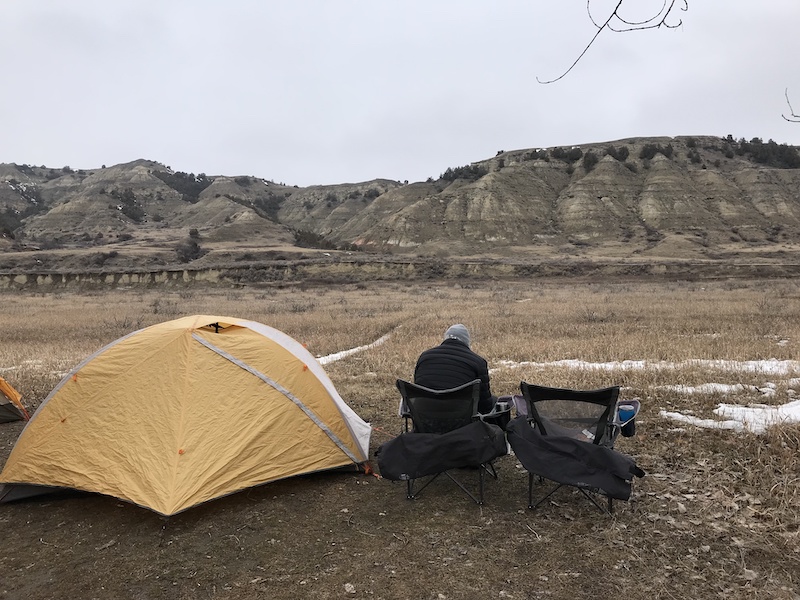
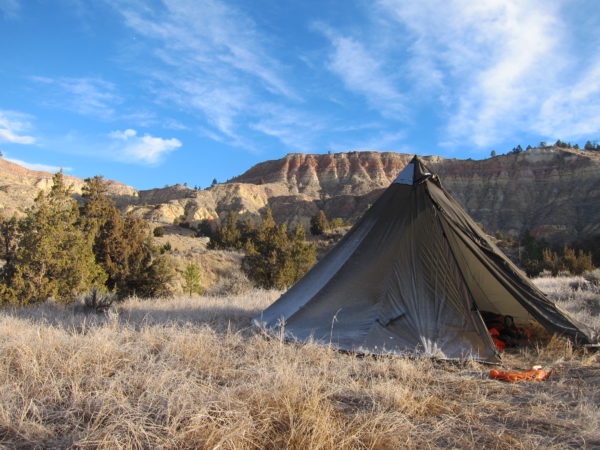
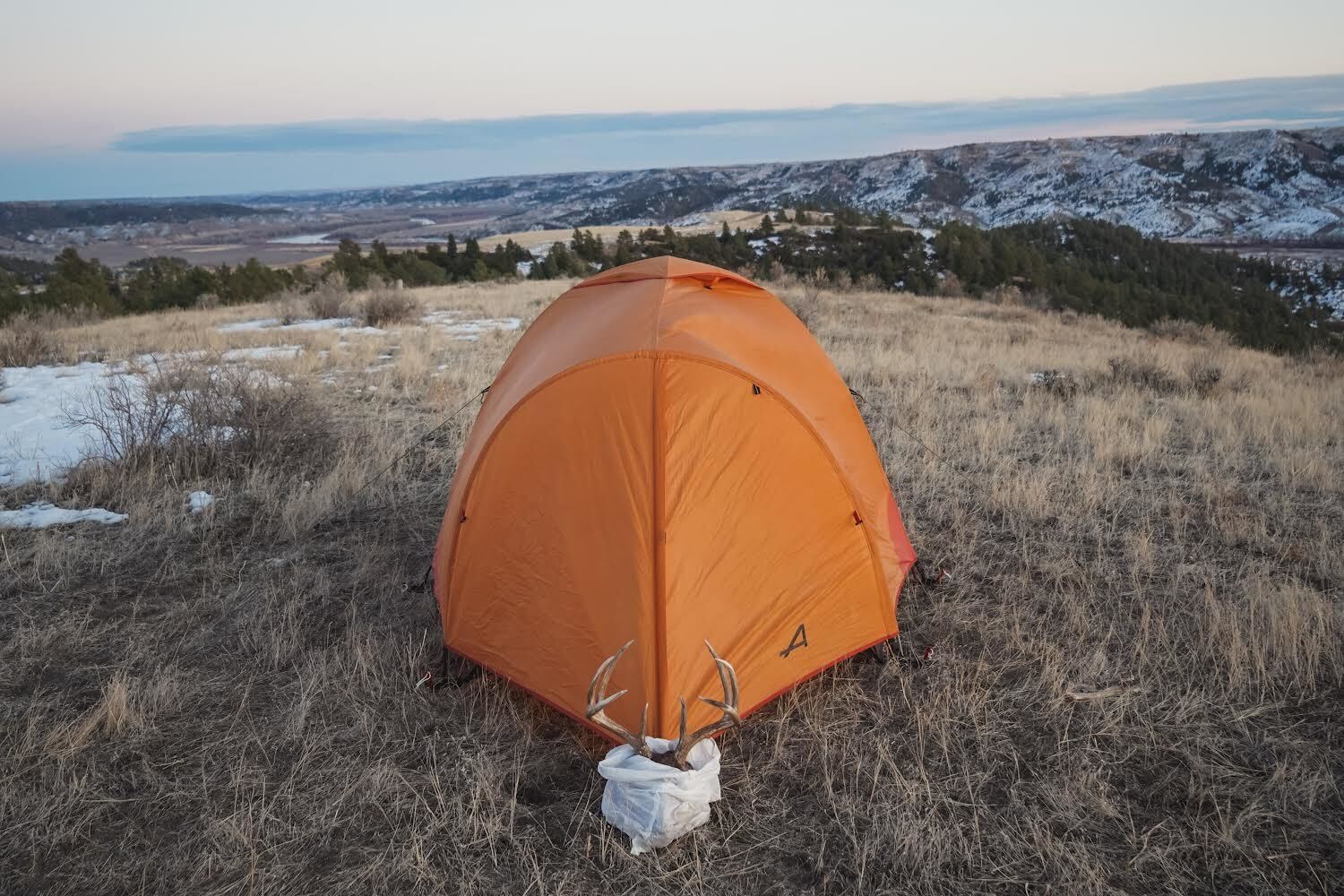
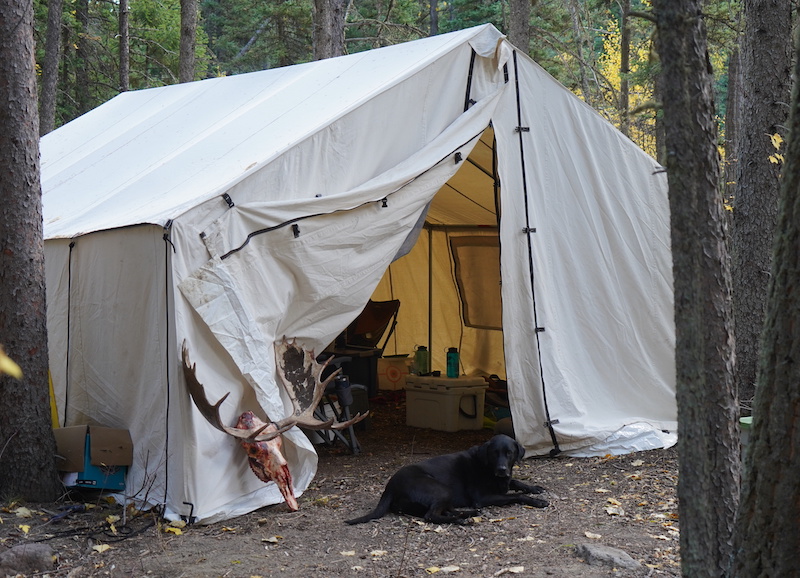
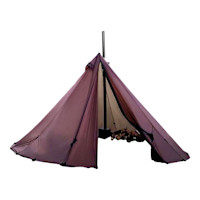







Conversation